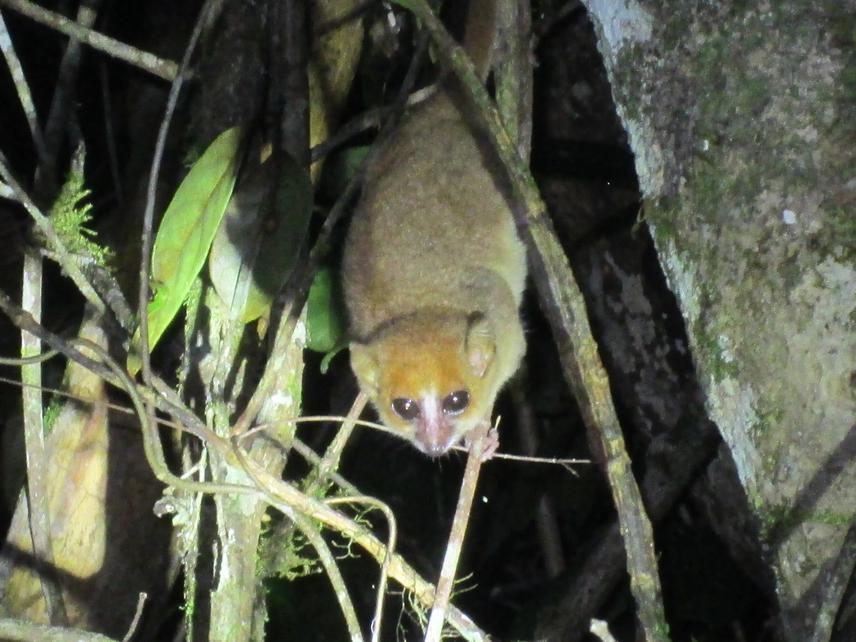Rio Heriniaina
Understanding how forest fragmentation affects lemur communities is key for conservation strategy and management. This research will explore the impact of edge effects on lemur communities in the rainforest of Madagascar. Few studies have investigated the effect of edge disturbance on lemurs in fragmented forest. From the edge to the interior of the forest, we will use transects and camera traps to gathering data on lemurs density and abundance. Forest disturbance will be measured by establishing botanical plots along the transect line. This research will provide greater understanding of the degree to which anthropogenic activities disturb lemur communities. The data produced from this research will be important for the conservation management of fragmented forests and hence for managers, government and NGOs, it will also update the baseline information on the lemur density and distribution in the study site.

Mouse lemur (Microcebus rufus) spotted during the fieldwork.
Lemurs are endemic to Madagascar and constitute one of the most threatened primate taxa in the world, due in part to the loss of 80–90% of forest habitats. The last International Union for Conservation of Nature (IUCN) Species Survival Commission reported that this group is probably the most threatened of any group of mammals. Habitat loss and fragmentation are among of the threat to lemurs. Understanding patterns in the distribution and the abundance of lemur species is important for lemur conservation, especially in fragmented forest outside of protected areas.
Our preliminary investigation in Ihofa found that there were several species of lemurs in the fragmented forest including woolly lemur (Avahi laniger), diademed sifaka (Propithecus diadema, Critically Endangered,IUCN 2016 and Edge Index, 2016), and Indri indri, (Critically Endangered, IUCN 2016 and Edge Index, 2016), Goodman's mouse lemur (Microcebus lehilahatsara), Rufous mouse lemur(Microcebus rufus),Red-bellied lemur (Eulemur rubriventer), and Black-and-white ruffed lemur (Varecia variegata).
This research will investigate the impact of edge effects on lemur communities in Ihofa and it will be the first study to investigate the edge effects on lemurs in this fragmented forest. By using line transect distance sampling and camera traps from the edge to the interior forest, we will assess the distribution, the density and the abundance of the diurnal and nocturnal species in the study site. The data is expected to advance the field of lemur ecology and conservation by bringing new perspectives in our understanding of how edge effects impact lemur communities. It will also provide greater understanding to the degree to which anthropogenic activities disrupt species density and distribution.
This conservation project, held in Ihofa, in the east part of Madagascar will provide an additional data on distribution, density and abundance of lemur communities. Additionally, it will highlight the importance and value of fragmented forest as a habitat to be considered for lemur conservation in Madagascar.